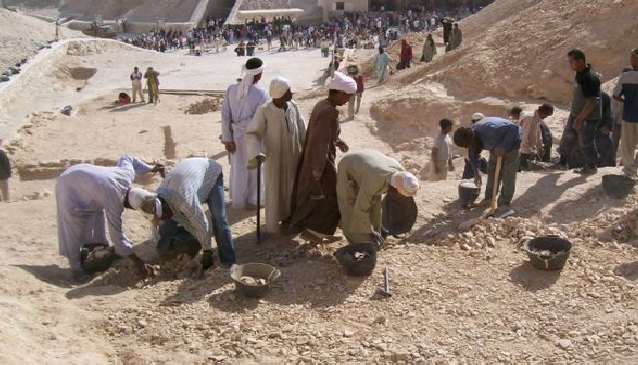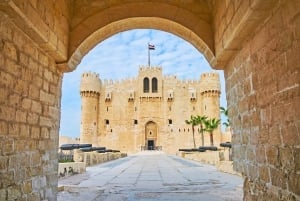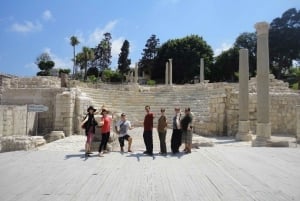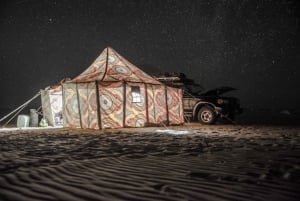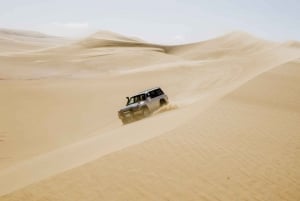Mummies and Pharaohs
The magic of ancient Egypt is alive in the hearts of people all over the world
Book Top Experiences and Tours in Cairo:
If youʻre booking your trip to Cairo last minute, we have you covered. Below are some of the top tours and experiences!- From Cairo Alexandria Catacombs, Citadel Day Trip with Lunch
- Cairo: Archeological Day-Trip to Alexandria
- Cairo: 2-Day Bahariya Oasis Camp and Desert Tour
- From Cairo: El Alamein and Alexandria Guided Day Tour
- Cairo: Dinner Cruise on the Nile River with Entertainment
The magic of ancient Egypt is alive in the hearts of people all over the world, and it grows stronger every time a major discovery is made. On November 4th, 1922, when Howard Carter discovered the tomb of Tutankhamun, a new era in Egyptology began. For more than 80 years, the golden artifacts found inside, along with a deadly curse, have made all of us wonder about the mysteries of the golden king. The land of the pharaohs was revealing magic and mystery long before the discovery of Tut’s tomb, however. In 1881, archaeologists first entered DB 320, a tomb at Deir El-Bahari that contained a cache of over 40 royal mummies, hidden there during the 22nd Dynasty after their own tombs were robbed.
There is an interesting link between the tomb of Tutankhamun and the mummy cache discovered in 1881. A particular family known as the Abdel-Rassouls, who were famous as tomb robbers, played an important role in both discoveries. Ahmed Abdel-Rassoul was the first to locate DB320, supposedly while out searching for a lost goat. The water boy who first found the steps leading down to the tomb of Tutankhamun belonged to the Abdel-Rassoul family as well.
Over 35 years ago, I was working in the Valley of the Kings as an inspector. I met Sheikh Ali, the last surviving member of the Abdel Rassoul family, and he took me to see the 19th Dynasty tomb of Seti I, one of the most beautiful tombs in the valley. Sheikh Ali led me to the entrance of a sloping tunnel that descends from the king’s burial chamber. This tunnel has never been fully excavated, and no one that we know of has ever reached its end. The sheikh told me that at the end of the tunnel, at a depth of about 100 meters, lies the real burial chamber of Seti I. He said that when I became an important archaeologist, I should excavate the tunnel myself. Sheikh Ali asked only that if I were to discover something interesting, I should tell everyone that he was the first to share the secret with me. I later learned about some small objects bearing the king’s name, which made me begin to think that treasures of the burial chamber could still be hidden at the end of this mysterious tunnel, just as Sheikh Ali said.

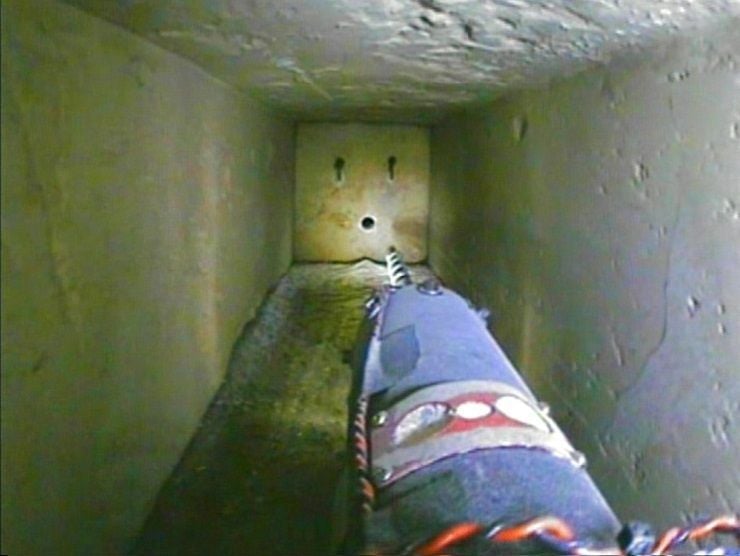
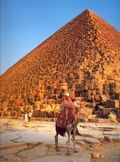
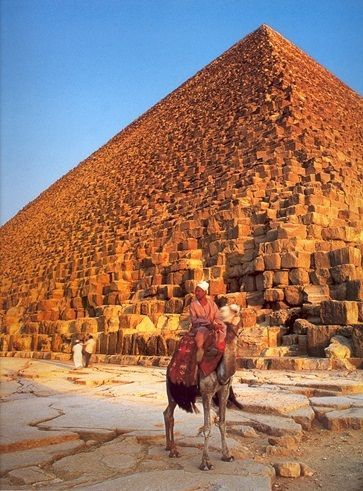


When I became Secretary General of the Supreme Council of Antiquities 6 years ago, I began to investigate the tunnel. I was able to enter it with the help of a rope. I took a flashlight and a tape measure with me, and carefully descended along the length of the passage for a little over 75 meters. Chunks of stone from the ceiling began to fall on my head, and I was forced to turn back. Last November, however, I went back to the tomb with an all-Egyptian team to begin shoring it up and excavating it systematically. We removed a great deal of stone rubble, and after conducting a geological study of the tomb, we began to construct wooden supports to prevent the tunnel from collapsing. To our surprise, as we excavated, we began to find artifacts such as funerary figurines or shabtis, small figurines made of wood, stone or faience, dating to the same period as the reign of Seti I. We also found blocks inscribed with the king’s cartouche. We have now explored over 120 meters into the tunnel, and everything that we have seen so far indicates that there could be a great discovery waiting for us at the end.
There have been many amazing discoveries in Egypt over the years. I would like to tell you some of the stories of my adventures in archaeology, and the discoveries that I have been a part of over the course of my career as an Egyptologist. I hope to show how many secrets Egypt still holds, and encourage people to visit this amazing country and discover it for themselves. I do not think that any place in the world can make people’s hearts tremble the way that Egypt does. Not only new discoveries, but also well-known monuments still excite people all over the world. Spend a week in Luxor in the winter, and you will surely feel the magic of the Valley of the Kings and the Great Temple of Karnak. Visitors can also experience the adventure of oases like Siwa, which I like to call the “lost paradise.”
The most beautiful oasis in Egypt, and the one that is closest to my heart, is Bahariya. In this oasis, a little over 400 kilometers southwest of Cairo, I discovered the Valley of the Golden Mummies. We learned of the site by accident, when a guard was out riding on his donkey. The animal stumbled when it stepped into a hole. When the guard peered inside, he could see gold gleaming from within a tomb buried beneath the sand. I came to the site with my team from Giza, and we began to excavate, eventually uncovering a number of tombs that contained a total of about 250 mummies. These mummies are unique. The heads and chests of many are adorned with cartonnage masks, some of which are covered in gold. Some have uraeus serpents at their brows, while others are decorated with hawks, the symbol of kingship, on the crowns of their heads. They were not royal mummies however, as by the Greco-Roman period private individuals had begun to use these symbols which had previously been reserved for the pharaohs and their families. We x-rayed about 15 of the mummies, and found that although they had generally been in good health during their lifetimes, most had died at a fairly young age. The cause of these early deaths may have been the high iron content of the well water they drank. Bahariya was important during the 26th Dynasty (ca. 688-525 BC) for the production of high-quality wine, which everyone in ancient Egypt hoped to taste in the afterlife. The story of the oasis as an important and wealthy area continued in the Greco-Roman period.




Another major discovery that captured the hearts of people all over the world was the cemetery of the pyramid builders at Giza. I had been searching for the tombs of the workmen who built the pyramids for most of my life, and even wrote in my doctoral thesis that they should be located to the south of the wall known as the “wall of the crow,” just to the south of the Great Sphinx. The necropolis is made up of two areas – the Upper Cemetery and the Lower Cemetery. Many artisans were buried in the Upper Cemetery. Their unique titles, such as “overseer of the side of the pyramid” and “overseer of the workmen who move the stones,” give us insight into how the great national project of pyramid building was organized and carried out. All of the skeletons that we have found, whether male or female, show signs of stress from hard physical work. To the east of the cemetery lies the “workmen’s installation.” Here, many of the daily activities of the pyramid builders were carried out. We have found bakeries in this area where their bread would have been prepared. According to the evidence that has been discovered, 11 cows and 33 goats were slaughtered each day for meat to feed the workforce. We calculated that this number of animals would have fed about 10,000 people. In order to understand the cemetery of the pyramid builders, we had to keep in mind the fact that the pyramids were a national project in which everyone from Egypt participated in. Each person in the community was expected to contribute to the construction of the monumental tombs that would help the pharaohs to live as Gods for eternity.
Perhaps the most exciting project of all that I have participated in is the investigation of the hidden doors inside the Great Pyramid. More than 10 years ago, we closed the pyramid for a year to allow us to correct the problem of high humidity levels inside. We brought in a German-made robot to clear the narrow shafts that lead out from both the King’s and Queen’s chambers, in the hope that this would offer some ventilation. When the robot set out on its journey up the northern shaft in the Queen’s chamber, it found that the tunnel made a sharp bend. The robot was not able to turn corners, and so it was not able to proceed further in that direction. In the southern shaft, after climbing about 200 feet, the robot came to a stop in front of a door with two copper handles. This discovery astonished the world, and has led to much speculation about what secrets may be hidden behind the door. When I became an Explorer-in-Residence with the National Geographic Society, I shared with them my dream of learning what lay at the end of these mysterious shafts. I asked them to help me find a robot that could investigate further. This second robot found another door in the southern shaft, about 8 inches beyond the first one. It was also able to navigate the northern shaft, which bends to the left and then to the right over a distance of about 24 feet to avoid the Grand Gallery. After about 200 feet, just as in the southern shaft, the robot encountered a door with copper handles. Right now, we are working to find a team of experts that can help us to build an even more advanced robot, so that we can finally learn the answer to the question of what these doors may be hiding.
Egypt holds many mysteries beyond those that surround the pyramids of Giza. I am currently directing the first all-Egyptian team ever to excavate in the Valley of the Kings. All of the 63 tombs that have been found to date in the valley were discovered by foreigners. I began my work in the area between the tombs of Merenptah and his father Ramesses II, where I believe the tomb of Ramesses VIII may be located. We have found evidence of a tomb opening in this vicinity. We are carefully preparing to open the tomb, and we are hopeful that it may be intact because the entrance was blocked by heavy stones that my team had to remove.

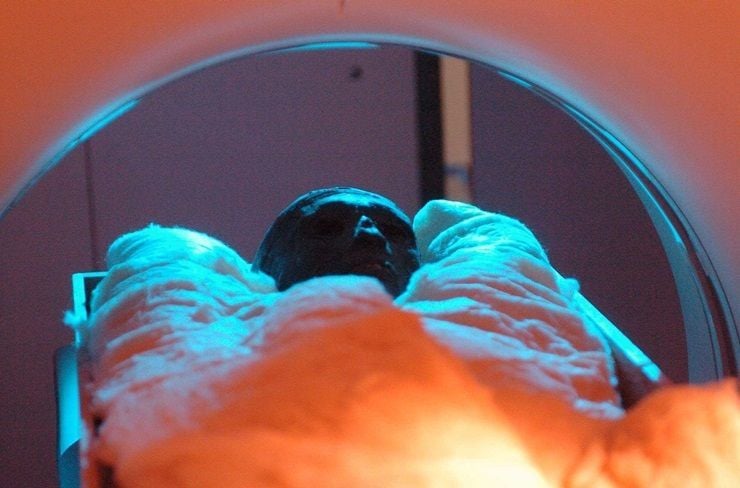
The Valley of the Kings has since become very important to me as an archaeologist. When the Supreme Council of Antitquities (SCA) received a CT-scan machine donated by Siemens and National Geographic, I decided to use it to investigate the mysterious death of King Tutankhamun. Because there was a hole in the back of the mummy’s head, many people believed that the young pharaoh was murdered. The CT-scan showed, however, that the embalmers who mummified his body actually made this hole. It seems that Tutankhamun died as the result of an accident – the CT-scan revealed a fracture in his left leg that had only had a few days to heal. We also learned that he died at the age of about 19. The Egyptian Mummy Project, of which the CT-scan of Tutankhamun formed a part, went even further in promoting scholarly and public understanding of the life and death of the golden boy. We constructed a state-of-the-art showcase inside his tomb, with temperature and humidity controls to preserve the fragile mummy. It was incredible to see the media from around the world gathered to document the movement of the boy king from his original sarcophagus into the new case. Now, visitors can gaze upon his face for the first time, while knowing that his body is safe for the foreseeable future.
We are continuing to reveal the secrets of King Tutankhamun as we search for the solution to the mystery of who the members of his family might have been. We are not sure, for instance, whether his father was Amenhotep III or the “heretic” king Akhenaten. I have written four books about Tutankhamun, and I believe that Akhenaten was his father. My opinion is based partly on a carved block found at Ashmunein, which shows the young king alongside his wife, Ankhsenpaaton (later known as Ankhesenamun). She is named as “the daughter of the king, of his body,” while Tutankhamun is called “the king’s son, of his body.” We know that Ankhesenamun was the daughter of Akhenaten and Nefertiti, and this inscription makes it seem that Tutankhamun was her brother. We have recently examined two mummified fetuses found in the young king’s tomb. If these tiny mummies were the children of Tutankhamun, they may be able to lead us to the mummy of their mother, who must have been Ankhesenamun. Once we find the remains of this queen, we will be able to identify the mummy of her mother, the great Nefertiti. I hope that we will soon be able to announce the results of this study, and tell the full story that has been unfolding in the SCA’s CT-scan and DNA laboratories.
But, of all my escapades the most memorable has to be identifying the mummy of Hatshepsut. For this adventure I brought all of the important unidentified female mummies known to Egyptologists to the Egyptian Museum in Cairo, in order to examine and compare them scientifically. Amazingly, the key to the mystery was discovered inside a small wooden box inscribed with Hatshepsut’s name. I decided on a hunch to do a CT-scan of this box, which contained a mummified internal organ. The scan showed that there was a tooth attached to this bundle. The tooth itself fit perfectly in a gap in the jaw of one of the unidentified female mummies, allowing us to determine that this mummy, found in a simple tomb in the Valley of the Kings known as KV60, belonged to one of the most powerful and amazing women in the history of the world.
Everyone who visits Egypt can still feel its magic today, and sense the secrets that lay hidden beneath its sandy surface. These legends and mysteries are truly what makes it one of the most amazing places on Earth.


